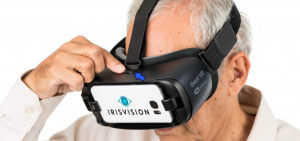IrisVision for Low Vision
If you suffer with vision loss, this wireless virtual reality device may allow you to regain your quality of life. While low vision can’t be
Read MoreRetinitis Pigmentosa and Low Vision
An estimated 1 in 4,000 people are affected by retinitis pigmentosa (RP). Retinitis pigmentosa is an inherited eye disease that causes a breakdown and loss of cells in the retina. The most common symptoms of RP include decreased peripheral vision, trouble seeing at sunset and night or colors appearing washed out. While there is no cure for most causes of RP, it can be managed effectively with the help of a low vision eye doctor
Read MoreHemianopsia and Low Vision
A brain injury can cause the loss of over 50% of your visual field, this is known as hemianopsia. Males from the ages of 50 to 70 are most frequently affected by this condition. Over 70% hemianopsias are caused by a blockage of the blood supply in the brain, most frequently due to a tumor or stroke.
Read MoreReading Tips For People With Low Vision
Approximately 3.22 million people in the United States have a visual impairment. For people with a visual impairment, reading is often one of the most
Read MoreTop Home Tips for Low Vision
One in six adults over age of 45 and one in four adults over age 75 has low vision. Having low vision – reduced vision that can’t be improved with glasses, contact lenses, medication or surgery – can make it difficult to perform day-to-day tasks. Fortunately, there are many things a person with low vision can do to remain independent and do the things they enjoy and love.
Read MoreWhat to Look For in a Low Vision Magnifier?
Asking yourself these questions before deciding on a low vision device to ensure you will gain from your low vision aid. Experiencing life with low
Read MoreGuide to Low Vision Devices
With the large variety of low vision devices now available on the market, our guide will help you choose a magnifier that best suits your
Read More






